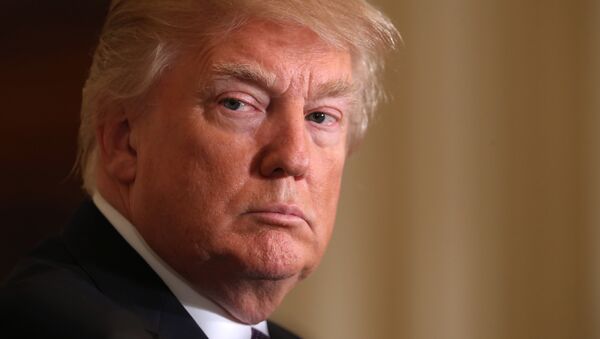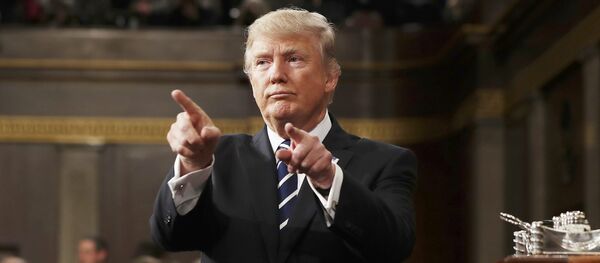Kristian Rouz – The US economy is on track to extend its current period of expansion beyond a 10-year mark, even though the pace of growth is poised to be subdued. Yet, chances of a structural recession within the Trump presidency are on the rise due to the White House protraction on a comprehensive economic reform.
According to an estimate by Deutsch Bank, the likelihood of a recession hitting the US economy in the coming 12 months is currently at 10 percent, but is poised to increase thereafter.
Currently, the Federal Reserve’s policies of tightening US monetary conditions have compressed the difference between short-term and long-term interest rates, also having flattened the yield curve – the difference between yields on short-term and long-term governmental bonds – which is an indication of downward dynamics in economic expansion.
"Despite this development, we do not see U.S. recession risk as particularly elevated; indeed, we think it is quite low for the next year," Deutsche Bank analysts wrote in a note.
A strong labor market is so far allowing for further expansion. The chances of a recession will significantly increase when the current 10-year business cycle ends in 2019, accompanied by a rise in the jobless rate, and affecting GDP growth. Unless the White House is able to deliver and implement a sound fiscal stimulus plan by then, the US economy will spiral into a period of contraction.
The next US recession, even though it might be motivated by cyclical factors, such as the end of the 10-year period of expansion in business activity, will likely be structural. Currently, many business owners and investors believe that certain sectors of the US economy have become inefficient because of overregulation and the accompanying corruption, being overall “rigged” as a result of a complex interaction between unions, machine politics, offshoring, and the misallocation of capital.
“There is little or no evidence that traditional cyclical sectors – namely housing, capex, and consumer durables, more broadly – are overextended, and sectoral balance sheets are reasonably solid,” economists at Deutsche Bank wrote. “For the year ahead, the risk of an economy that begins to move towards overheating seems noticeably greater than that of an economic downturn.”
Several other sectors are facing similar structural issues, stemming from the excessive inter-connectedness of interests of big money and political power.
Therefore, the Trump administration will have to take decisive action to implement, aside of the massive fiscal stimulus to the economy, a comprehensive reform aimed at improving the quality of governance and governmental management.
The IMF currently expects the US economy to expand by 3.5 percent this year, up 0.1 percent from their January estimate. The White House is also optimistic, with President Donald Trump saying he expects an improvement in macro indicators.
"I think some very good numbers are going to be announced, by the way, in the very near future, as to GDP," Trump said.
Yet, US consumption that drives over 70 percent of US GDP is underperforming, with high levels of household indebtedness holding back an expansion in retail sales. The lack of wage inflation is another issue weighing on the purchasing power of US consumers.
US home sales are also limited as mortgage costs have increased from an average 3.5 percent last July to the current 5 percent, in line with the Fed’s monetary tightening. The aforementioned insufficient supply of new homes is also holding back consumer activity in this segment.
The Federal Reserve is in a hurry to hike interest rates and reduce their balance sheet, as asset bubbles are likelier to emerge in loose monetary conditions. Currently, the car loan and student loan segments are potentially hazardous, whist high real estate prices add to the asset bubble debate.
"The more hawkish scenario would clearly move the Fed's policy stance to a level that would make a recession likely by late-2019 or 2020," Deutsch Bank analysts wrote.
The most appropriate scenario for the US economy would be a modest expansion at 2.5-3 percent year-on-year till early 2018; then Trump’s fiscal stimulus would elevate GDP expansion to the levels of 4-4.5 percent growth, allowing the Fed to intensify rate hikes and normalize their balance sheet. After running full steam for six-eight consecutive quarters, the US economy will slide into stagnation and recession by early 2020 as structural issues take a toll on the expansion.




